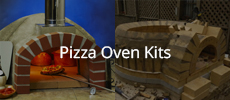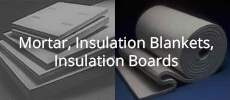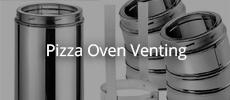X
-
I’m 1500 km away from home currently and don’t have access to my photos, sorry. I precast the supporting slab for my ovens and cast 4 holes around the perimeter which line up to the dome insulation as well as one in the centre to vent the underfloor insulation. These holes are12 mm in diameter and I glue a small piece of fibreglass insect screen over the top of each hole. It is a system that works remarkably well.
-
David
i really like your idea for weep holes under the perimeter of the floor to vent steam from the CF blankets. Very novel. Do you have any photos of exactly how you do this?
Leave a comment:
-
Morgan Superwool unlike some previous generation of CFB, is biosoluble and has been exonerated as a possible carcinogen, but precautions as recommended by the manufacturer should be followed.Originally posted by rsandler View PostMorgan Superwool Plus is a variety of ceramic fiber blanket; I used that on my second oven. Works great--go ahead and buy that. As far as safety, they do claim that it is engineered to shed less fiber and dust, making it safer, but I wouldn't count on it and would still take precautions.
Leave a comment:
-
Morgan Superwool Plus is a variety of ceramic fiber blanket; I used that on my second oven. Works great--go ahead and buy that. As far as safety, they do claim that it is engineered to shed less fiber and dust, making it safer, but I wouldn't count on it and would still take precautions.
Leave a comment:
-
Oven dome Insulation blanket
I had some difficulty sourcing Ceramic Fibre Board insulation for the oven floor. Thinking ahead for dome insulation blanket, I found a supplier offering SuperWool Plus", made from alkaline earth silicate (AES). Is this a suitable alternative from Ceramic fibre blanket?
The SuperWool product does appear to be safer in terms of handling and is not considered hazardous.
Leave a comment:
-
Definitely go with stainless steel for durability, and make sure you have good ventilation for the barbecue and wok.
Leave a comment:
-
Something seems to have gone wrong with this thread? Some of the replies belong in my build thread.Originally posted by david s View PostBecause the top of the dome gets hot first, the moisture present there is also driven out first.,as moisture will always travel away from the heat source. For this reason, the direction of moisture travel is towards the base of the dome, so any venting is better placed at the bottom. This situation can also be assisted by steam pressure build up in the upper part of the insulation space. The accompanying drawing explains this process.
Alternatively if you are still keen to provide a vent in the upper section of the insulation space, some holes made in the base of the flue pipe that sits in the insulation space, can allow moisture to escape into the flue pipe and exit there (second drawing)
Either of these solutions remove an exposed breather at the top of the dome's exterior.
UtahBeehiver could you move replies 3,4,8,9,10 in this thread back to mine if possible?
Leave a comment:
-
Do you know how I can find the thread fo Nick JC? Unable to find where I can search for it.....
Leave a comment:
-
Hello all!
I've been building an oven using Alan Scott's Bread Builders, and ready to set my chimney. I plan to use an 8" square clay flue and surround it with common red brick. Here's the question: after seeing the flue pipe with refractory mortar, can I use standard type S mortar modified with some fireclay for the brick work? I plan to leave a 1/2" air gap between the flue line and the brickwork. Also, would it be out of the question to use structural bricks (with holes) for the chimney brick as opposed to solid reds? Thanks for the help! I am trying to avoid buying more of the expensive refractory mortar.
Leave a comment:
-
Because the top of the dome gets hot first, the moisture present there is also driven out first.,as moisture will always travel away from the heat source. For this reason, the direction of moisture travel is towards the base of the dome, so any venting is better placed at the bottom. This situation can also be assisted by steam pressure build up in the upper part of the insulation space. The accompanying drawing explains this process.
Alternatively if you are still keen to provide a vent in the upper section of the insulation space, some holes made in the base of the flue pipe that sits in the insulation space, can allow moisture to escape into the flue pipe and exit there (second drawing)
Either of these solutions remove an exposed breather at the top of the dome's exterior.
Last edited by david s; 07-18-2024, 03:19 PM.
- Likes 1
Leave a comment:
-
The vent on the dome is just not for drying ceramic/pcrete on dome. Water has a way if getting in the ovens especially those oven open to the elements. So if the blanket or the pcrete gets wet on the dome and you heat the dome up during cooking, physical water when it sublimates to vapor, increases in volume by1500-1600 times which can increase the pressure between the dome and the outer stucco layer. Unless there is a way to relieve this potential pressure their is the risk that this internal pressure could crack the final or outside render. A vent provides pressure relief.
Leave a comment:
-
Thanks for your clarification SableSprings, I do see that the mosaic tiles are mostly put under insulation boards. My understanding is that it is to prevent any direct wetting of them: the water can go around the mosaic tiles to the weep holes. However, I don't fully get the rationale for doing it only there? As all insulation materials would love to wick up that water, also the blankets and vermicrete layers would soak it up very fast right? Or is your explanation that they dry out much faster due to the vent port? Would there be any downside to extending the tiles under the blankets and vermicrete?Originally posted by SableSprings View PostThe mosaic tiles are only intended for underneath the oven, separating the concrete top slab from the bottom insulation (board or insulated concrete).
Leave a comment:





Leave a comment: